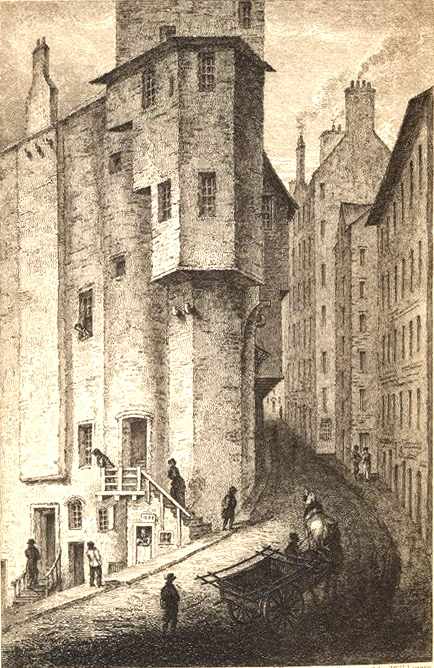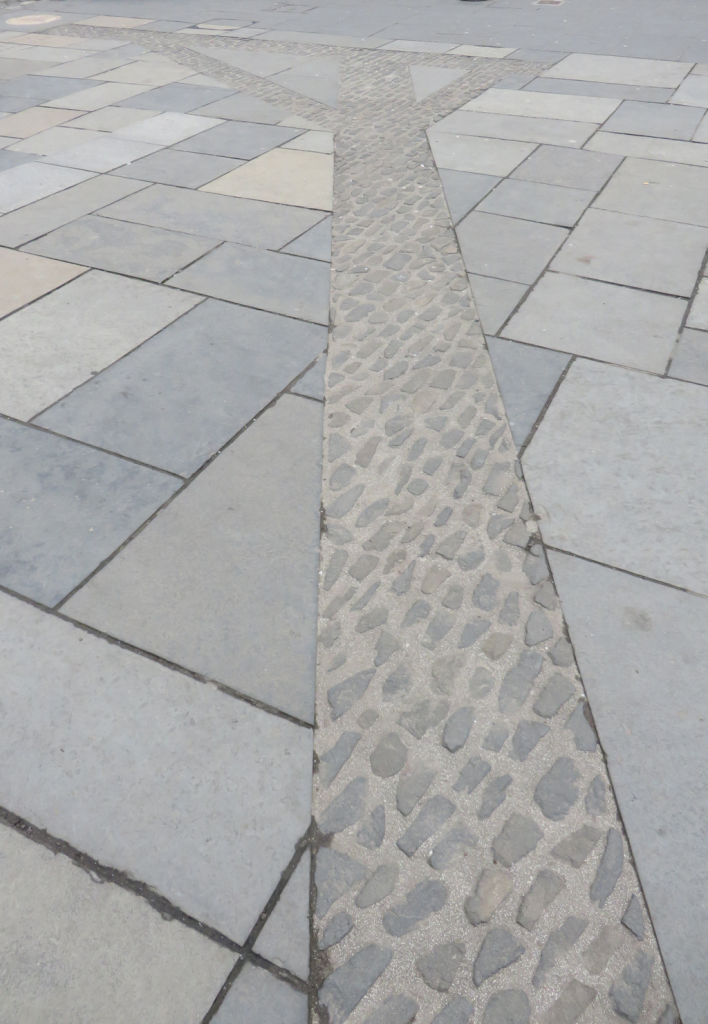Thanks to all who got in touch last week in response to the post on the First Marquis of Montrose. He was a fascinating character, and I feel we will return to him again in the future.
The subject of this post is a man who knew Montrose as a soldier, fighting both alongside and later, against him. He was one of those who blew smoke into poor Montrose’s prison cell and he led the guard that harassed the Marquis all the way to the gallows. However, Major Thomas Weir is not remembered today for his exploits as a Covenanter but for the strange confession he later made. It was a testament of such vile and unnatural deeds that it would take him to his death and lead to him gaining the enduring title of, ‘The Wizard of West Bow’.
Thomas Weir was born in 1599 in Clydeside and moved to Edinburgh around 1649, eventually settling in West Bow with his sister Jean, who was also known as Grizel.

At the time, the present day Victoria Street did not exist and West Bow wound steeply up from the Grassmarket to Lawnmarket. Some of the city’s most pious citizens lived on the street – so much so that they were known as ‘The Bowhead Saints’ and chief among them was Robert Weir.
A devout Calvinist, he had a particular antipathy toward Anglicans, so much so that it was said that he, “…could not so much as endure to look upon an Orthodox Minister; but when he met any of them in the street, he would pull his hat over his eyes in a pharisaical kind of indignation and contempt.” He was a striking figure, tall, dark, with a grim face and a large nose. He always dressed in black, with a long cloak and he carried a black thornwood staff, carved with a bizarre human head, wherever he went.
Weir would openly preach in the streets, working himself up into a religious ecstasy, during which he would brandish forth the thornwood staff. This would later be seen as significant.
One day, at the age of seventy, Thomas Weir stood up in church and began a detailed confession of the most unspeakable crimes. He announced that for most of his life he had carried out an incestuous relationship with his sister, and had committed fornication with numerous women. He had also been involved with witchcraft and admitted to bestiality with a cow and a mare.
Word of this quickly reached Edinburgh’s Provost, Lord Abbotshall. He assumed, not unnaturally, that Weir had lost his mind and attempted to play the whole thing down. However, Jean Weir now came forward to say that everything in the confession was true. She went even further, saying that not only were the siblings guilty of incest but she too had had a series of bizarre sexual encounters and had met with ‘The Queene of Fairie’ and the Devil.
Jean Weir told them that her brother had arranged a compact with the Devil and that it was he who had given Thomas the black staff. She also claimed that the Devil had taken them for a ride in his coach, pulled by six horses, all on fire. They had visited Musselburgh, where the Devil told them the outcome of a battle a week before it became known in Edinburgh.
Abbotshill still wished to avoid any proceedings and brought in doctors to examine Thomas and make a statement about his mental health. Unfortunately, they concluded that Major Weir was suffering from nothing worse than a guilty conscience and that he wished to be punished to the full extent of the law. Reluctantly, the Provost had Robert Weir arrested and formal charges were laid against him.
His sister told the jailers that the Devil had put great power into the staff and that under no circumstances must Robert be allowed to hold it for, “…if he chanced to get it into his hands he would certainly drive them all out of doors, notwithstanding all the resistance they could make.” She said he did “…many wonderful things with it, particularly that he used to lean upon it in his hypocritical prayers.”
The trial opened on April 9, 1670. Thomas Weir was charged with Incest, Adultery (various women were named) and Bestiality. Jean was charged with Sorcery, Witchcraft and “conversing with a Familiar spirit.” The only evidence against them was their confessions, though a second sister, Margaret Weir, did tell the court that she had seen them naked in bed together once. Thomas had not been charged with witchcraft but told the court that he had lain with the Devil in the shape of a beautiful woman.
The jury took only a little time to find them both guilty. Thomas was sentenced to death by being “Strangl’d at a Stake between Edinburgh and Leith on Monday following, the 11th of April, and his Body to be Burned to Ashes.” Jean was sentenced to be “Hanged on the Tuesday morning in the Grassmarket of Edinburgh.”
As he was taken to his execution, Thomas Weir was encouraged to repent and pray for his immortal soul. He replied, “Let me alone, I will not. I have lived as a beast, and I must die as a beast.”
After he was strangled, his body was burnt. The black staff was also thrown onto the fire where, according to witnesses, it twisted and turned, burning for a long time before it was finally consumed.
Jean Weir it seems was equally determined to go out unrepentant. At her hanging the next day, she tried to take all her clothes off before being restrained so that the proceedings could be concluded. She was buried with the ashes of her brother at Shrub Hill, off Leith Walk, near where Pilrig Street is today.

After their deaths, the house in West Bow lay empty for many years. No-one wished to live there and rumours and stories of haunting made it an unpopular site.
Sir Walter Scott, a great fan of all things occult wrote in 1830, “It is certain that no story of witchcraft or necromancy, so many of which occurred near and in Edinburgh, made such a lasting impression on the public as that of Major Weir.
“The remains of the house in which he and his sister lived are still shown at the head of the West Bow, which has a gloomy aspect, well suited for a necromancer.” It was demolished shortly afterwards and any trace of it now lies below the Quaker Meeting House.
Which only leaves us with the puzzle of why did Thomas and Jean make such fantastic confessions? In seventeenth century Scotland, witchcraft was a serious offence that would almost certainly lead to an unpleasant death. Most of those convicted only confessed after being tortured, and that played no part in the Weirs’ statements. Unless it was the self-inflicted mental torture of a life lived as a hypocrite. Perhaps Thomas and Jean really had been carrying on an incestuous affair. Perhaps Thomas really was the fornicator he latterly claimed to be and in old age could no longer reconcile this with his public image as a ‘saint’.
It seems that wherever one looks in Auld Reekie, the spirit of Jekyll and Hyde may be found.

Leave a Reply